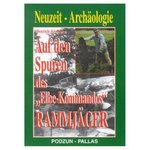Sonderkommando Elbe
From Wikipedia, the free encyclopedia
Sonderkommando Elbe was the name of a World War II Luftwaffe task force assigned to bring down Allied bombers by ramming German aircraft into the bombers. Sonderkommando means special command, and Elbe is a river that runs through Germany to the North Sea. While the Luftwaffe had a ready supply of airplanes at this point in the war, well-trained pilots and fuel were two components in short supply. Despite the grim prospects of survival of such a mission, the unit was not a true "suicide unit" in that the pilots were expected to either attempt to bail out just before colliding with the Allied aircraft, or attempt to bail out after colliding.The Japanese loaded their planes up with explosives. Therefore they would sacrifice themselves in the impact.
The aircraft of choice for this mission was a Bf 109 stripped of armor and armament. To accomplish this mission, pilots would typically aim for one of three sensitive areas on the bombers. The easiest part of an Allied bomber to damage was the empennage, or tail assembly, with its delicate control surfaces on the elevator and rudder. Another potential target were the engine nacelles, which connected to the highly explosive fuel system. The final target was also the most gruesome—the cockpit. One of the most famous reports of cockpit ramming was against the B-24 Liberator, the "Palace of Dallas".
Adding to the last ditch nature of this task force, the only mission was flown on 7 April 1945 by a sortie of 120 Bf 109s. While only 15 Allied bombers were attacked in this manner, eight were successfully destroyed.[1][2]
[edit] Known successful Sonderkommando Elbe pilots
Rank / Name / Former Unit e/a Unit Status
Uffz. Heinrich Rosner, (ex-III/JG.102), 2 B-24 Liberators of the 389th Bomb Group, 1st B-24 rammed was named "Palace of Dallas", 2nd B-24 unknown, Survive
Obfw. Werner Linder, (ex-EJG.1), 1 B-17 Flying Fortress 388th Bomb Group, KIA
Fhr. Eberhard Prock, 1 B-17 452nd Bomb Group, KIA, Shot-while descending in his parachute.
Fw. Reinhold Hedwig, 1 B-17 452nd Bomb Group, KIA, Shot-down by 339 Fighter Group P-51.
Uffz. Werner Zell, 1 B-17 100th Bomb Group. {B-17 J-38514 damaged see[3]}
Uffz. Werner Zell, 1 B-17 452nd Bomb Group, WIA Shot-down by P-51.
Ogfr. Horst Siedel, 1 B-17 452nd Bomb Group, KIA
Lt. Hans Nagel, (ex-IV/JG.102), 1 B-17 490th Bomb Group, KIA, Shot it down by conventional armament, damaged a second B-17 by ramming.
Fritz Marktschaftel
Uffz. Klaus Hahn, 1 B-17 487th Bomb Group, WIA - Left arm by 4 P-51Ds fire.
Heinrich Henkel, 1 B-24 Liberator, called "Sacktime" 467th Bomb Group, Survive.
Unknown Bf 109 pilot, 1 B-17 100th Bomb Group, KIA
Unknown Bf 109 pilot, 1 B-17 490th Bomb Group, KIA {B-17 380558 severely damaged}
Luftwaffe records claim at least 22 to 24 American aircraft fell victim to the Sonderkommando Elbe unit.
(WIA - wounded in action / KIA - killed in action)
From Wikipedia, the free encyclopedia
Sonderkommando Elbe was the name of a World War II Luftwaffe task force assigned to bring down Allied bombers by ramming German aircraft into the bombers. Sonderkommando means special command, and Elbe is a river that runs through Germany to the North Sea. While the Luftwaffe had a ready supply of airplanes at this point in the war, well-trained pilots and fuel were two components in short supply. Despite the grim prospects of survival of such a mission, the unit was not a true "suicide unit" in that the pilots were expected to either attempt to bail out just before colliding with the Allied aircraft, or attempt to bail out after colliding.The Japanese loaded their planes up with explosives. Therefore they would sacrifice themselves in the impact.
The aircraft of choice for this mission was a Bf 109 stripped of armor and armament. To accomplish this mission, pilots would typically aim for one of three sensitive areas on the bombers. The easiest part of an Allied bomber to damage was the empennage, or tail assembly, with its delicate control surfaces on the elevator and rudder. Another potential target were the engine nacelles, which connected to the highly explosive fuel system. The final target was also the most gruesome—the cockpit. One of the most famous reports of cockpit ramming was against the B-24 Liberator, the "Palace of Dallas".
Adding to the last ditch nature of this task force, the only mission was flown on 7 April 1945 by a sortie of 120 Bf 109s. While only 15 Allied bombers were attacked in this manner, eight were successfully destroyed.[1][2]
[edit] Known successful Sonderkommando Elbe pilots
Rank / Name / Former Unit e/a Unit Status
Uffz. Heinrich Rosner, (ex-III/JG.102), 2 B-24 Liberators of the 389th Bomb Group, 1st B-24 rammed was named "Palace of Dallas", 2nd B-24 unknown, Survive
Obfw. Werner Linder, (ex-EJG.1), 1 B-17 Flying Fortress 388th Bomb Group, KIA
Fhr. Eberhard Prock, 1 B-17 452nd Bomb Group, KIA, Shot-while descending in his parachute.
Fw. Reinhold Hedwig, 1 B-17 452nd Bomb Group, KIA, Shot-down by 339 Fighter Group P-51.
Uffz. Werner Zell, 1 B-17 100th Bomb Group. {B-17 J-38514 damaged see[3]}
Uffz. Werner Zell, 1 B-17 452nd Bomb Group, WIA Shot-down by P-51.
Ogfr. Horst Siedel, 1 B-17 452nd Bomb Group, KIA
Lt. Hans Nagel, (ex-IV/JG.102), 1 B-17 490th Bomb Group, KIA, Shot it down by conventional armament, damaged a second B-17 by ramming.
Fritz Marktschaftel
Uffz. Klaus Hahn, 1 B-17 487th Bomb Group, WIA - Left arm by 4 P-51Ds fire.
Heinrich Henkel, 1 B-24 Liberator, called "Sacktime" 467th Bomb Group, Survive.
Unknown Bf 109 pilot, 1 B-17 100th Bomb Group, KIA
Unknown Bf 109 pilot, 1 B-17 490th Bomb Group, KIA {B-17 380558 severely damaged}
Luftwaffe records claim at least 22 to 24 American aircraft fell victim to the Sonderkommando Elbe unit.
(WIA - wounded in action / KIA - killed in action)

